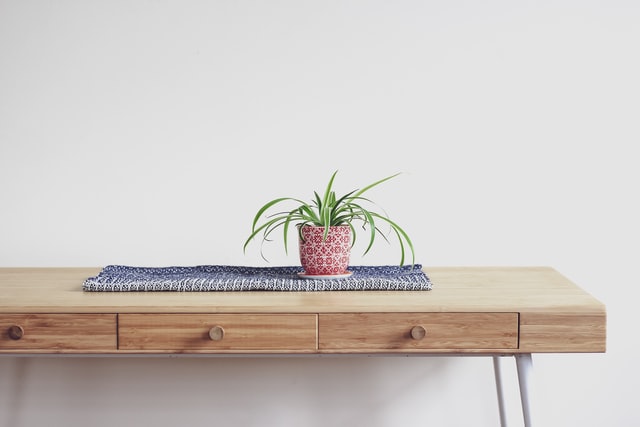If you are battling to keep your spider plant alive and wondering, “How Do You Bring A Spider Plant Back To Life?” You have come to the right place.
Today, we’ll learn some ninja tricks for reviving your spider plant. So, let’s get started.
If you have a spider plant that appears to be dying, you may try to save it by moving it to a more brightly lit area where it will receive indirect light and then examining it for any signs of probable harm. Excessive water or an infestation of pests is most likely to blame for the problem. Before you water the soil, let it dry for a while, and then spray it with neem oil to get rid of the insect infestation. If you need to, repot the plant.
We don’t want to scare you, but we do want you to be aware of the signs and take the required steps to save your spider plant from withering.
Table of Contents
How Do You Bring A Spider Plant Back To Life?
Symptoms of a Dying Spider Plant
Our plants may not be able to communicate with us verbally, but they will definitely show us when anything is wrong with them. In addition to this, the spider plant will show you some visible symptoms of distress if it is in any danger. The following are some symptoms of a dying spider plant:
- The leaves are developing a yellowish-brown color.
- There is no fresh growth.
- Bad smell in soil
- Soggy soil
- Leaves shedding
- The foliage is drooping.
If you observe any of these symptoms, it is likely that your plant is experiencing some kind of distress. You must take the appropriate precautions to keep your plants from dying. So, let’s not waste any more time and get right to it.
How to save a dying spider plant?
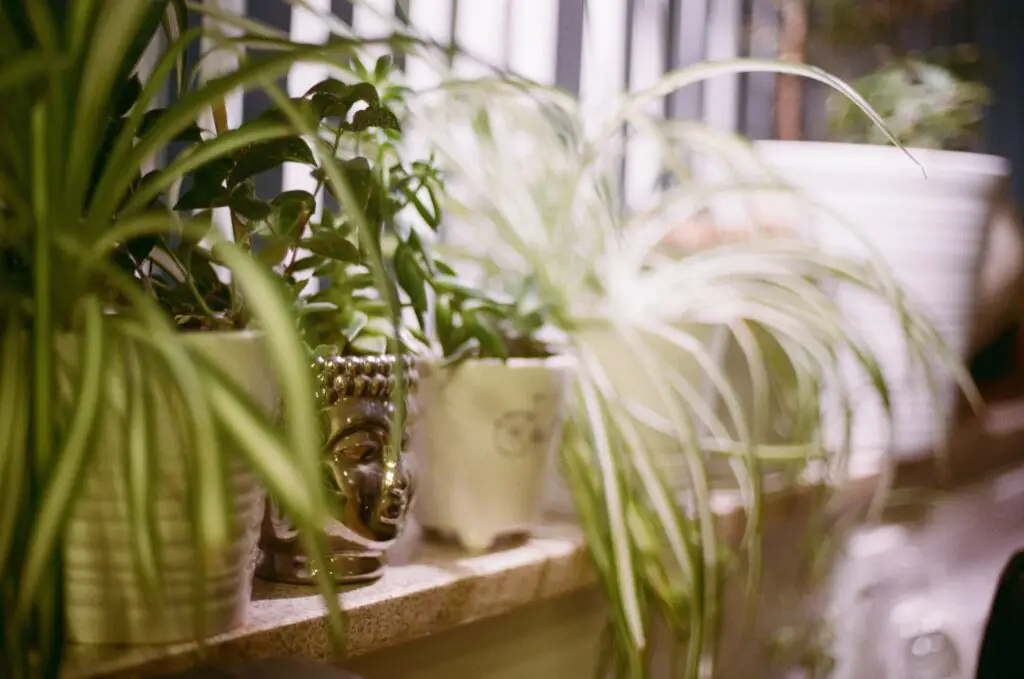
It’s upsetting to see your plant die. It is highly recommended that you act promptly in order to bring your spider plants back to life. You can save your dying spider plants with the appropriate action and resources.
There are a number of potential causes that might result in the withering of your spider plant. Among these are: The most important stage is recognizing the correct problems and taking the appropriate procedures to bring your spider plant back to life.
Read more: Why Spider Plant Leaves Bend?
Overwatered spider plants
The most common way for individuals to accidentally kill their spider plants is by giving it too much water. If you’re guilty of overwatering your spider plants, you need to move quickly to correct the situation.
When you water your cherished plant, you should not suffocate it; rather, you should supply the essential nutrients to the soil, the roots, and the leaves.
Problems that might arise include:
- The color of the leaves will begin to change to yellow.
- An overwatered plant is more likely to attract unwanted bugs and pests.
- New leaves begin to fall off.
- The color of the leaves begins to fade.
- Leaves will turn brown if they are submerged in too much water.
- Ultimately, the roots will begin to rot.
Solutions:
- Take a break from watering your spider plant.
- Throughout the day, provide them with bright indirect light.
- Allow the soil to completely dry out, and make sure there is adequate air circulation.
- Loosen the top layer of the soil in order to improve the circulation of air throughout the soil.
- You should only water the plant if the soil becomes completely dry.
You may also purchase a moisture meter in order to evaluate whether or not your spider plant requires additional water.
Read more: How Do You Fix A Wilted Spider Plant?
Prevention:
- You will never overwater your plant if you continuously examine the soil before watering it.
- Avoid following any recommended watering schedule for your spider plant.
- You may test the soil moisture by digging a finger or skewer into the soil and feeling whether it is dry or damp.
- It’s better if you don’t keep the soil and roots moist for too long.
- Ensure that any extra water drains via the drainage holes.
- You should adjust how often you water your spider plant based on the current season. The plant has a lower water requirement in the wintertime, but its water requirements are higher in the summertime.
Underwatered spider plant
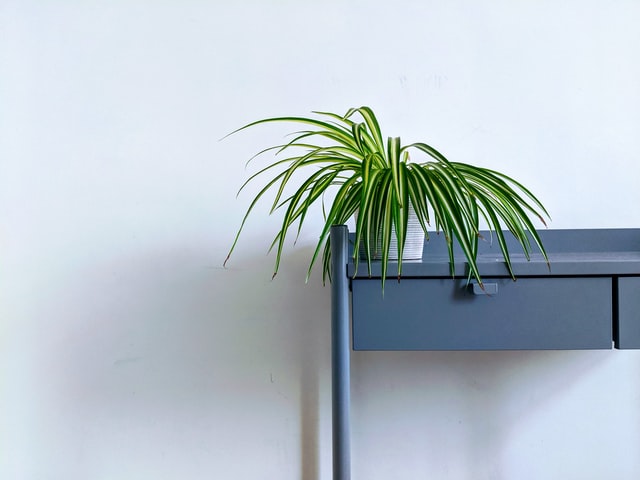
If you are someone who, like me, frequently forgets to water their spider plant or if you enjoy taking extended trips, then your spider plant will have to go without water for an extended period of time.
The spider plant could thrive well even if underwatered. They will, however, suffer if they are left in comparable surroundings for a lengthy period of time.
It is recommended that you should not let your spider plant get bone dry. The following suggestions will teach you how to keep them hydrated and healthy.
Read more: Why is my Spider Plant drooping?
Problems that might arise include:
- The color is going out of the leaves.
- The foliage is dry and crisp.
- Some leaves are beginning to turn brown.
- Brown edges will begin to develop.
- The plant’s growth is slow.
- The leaves appear to be dead and pallid.
Solution:
- Any damaged parts of your spider plant’s leaves should be clipped.
- Give your dehydrated spider plant a good watering and then allow any excess water to drain away.
- Repeat the process of watering the plant in order to rehydrate it once all of the excess water has been drained.
- You may alternatively fill a big pot with water, immerse the plant pot in the water, and then let it sit for a time before replacing it in its original location.
- Check to see if the plant is getting adequate light.
Prevention:
- To water your plant, avoid any scheduling.
- Every time you water your plants, make sure you give them a good soaking.
- Because the plant’s water requirements fluctuate with the seasons, you should adjust how often you water it to meet those requirements.
- Examine the soil composition to see if it drains adequately. Check that the soil drains effectively.
- To ensure that the plant receives the necessary amount of water, you might employ the bottom-watering approach.
Spider plant lighting issues

Lighting problems usually imply either too much or too little light for lengthy periods of time. Both of these things are detrimental to the health of your spider plant.
It implies that there should be a balance between the two, which means that moderation can be the solution to this problem. We have looked into the relevant data regarding the same thing.
Read more: Why Are My Spider Plant Leaves Folding?
Problems that might arise include:
Excessive light:
- Your plant will become sunburned.
- The leaves begin to wilt and become brown.
- The leaves and foliage begin to droop.
Low-light situations:
- The plant’s stems and leaves are frail.
- The leaves begin to droop.
- Plants have a tendency to grow leggy.
Solution:
- Transfer your plant to a better light source, which is at least 6 hours of indirect bright light.
- Keep your plant next to a window, but protect it from the sun’s rays by moving it away from the window after a few hours.
- Light that is indirect should be provided during the intense hours, and some direct light should be provided when the sun is rising or setting.
- If you believe that your spider plant is not receiving enough light, another option is to invest in some grow lights.
Prevention:
- You should try to keep your spider plant out of the sun for more than a few hours at a time.
- If you position your spider plant so that it faces east or south, it will receive the optimal amount of light for promoting healthy growth.
- You may pick the proper orientation on your own, the location where the plant will receive early morning and late afternoon sunlight.
- If you leave your plant outside, you must ensure that it does not spend an excessive amount of time exposed to direct sunlight.
- To protect your plant from being scorched by the sun’s rays, you need to install some sort of canopy over it.
- If your plant does not receive sufficient sunlight, especially during the winter months, you should supplement it with artificial light.
Spider plant root rot.
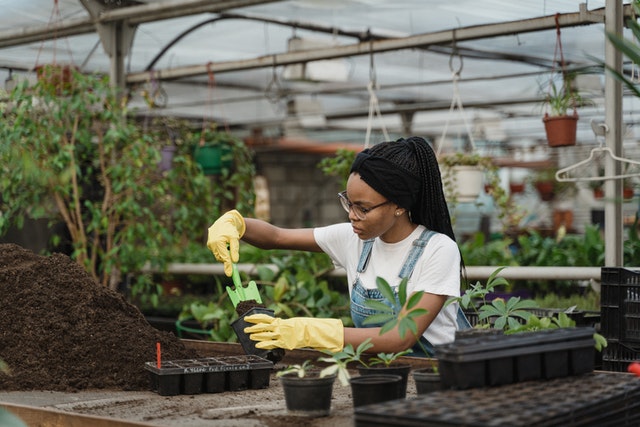
A plant that has root rot is suffering from a condition that causes significant internal damage. The primary causes of this are typically excessive watering or a dense soil mixture.
The roots suffocate and become susceptible to fungal infections, root rot, and other problems. They can no longer thrive on their own owing to constant pressure and poor exterior and internal circumstances.
Read more: Why Are My Spider Plants Leaves Curling?
Problems that might arise include:
- There is little to no new growth.
- The soil has a foul odor.
- The roots are soft, brown, and mushy.
- The leaves begin to droop and become yellow.
- The leaves appear to have both black and brown spots on them.
- It’s possible that the leaves will get paler and lose their color.
- The shine and brilliance of the leaves are deteriorating.
- If the roots of the plant are severely damaged, the plant can perish within the next 10 days.
Solution:
- Holding the leaves, gently remove your spider plant from the pot.
- Examine the status of the roots without disturbing them too much.
- The condition of the roots should be such that it is possible to bring them back to life.
- If the plant’s roots are completely mushy, brown, and squishy, then it is possible that the plant will need to be thrown away.
- There is a gleam of hope for your spider plant if there are any white, solid roots visible.
- To get rid of bacteria and fungus in the roots, wash the plant under running water and use soapy water.
- The plant has to be exposed to clean air for some time in order to clear itself of the fungus and allow it to breathe properly.
- For a few minutes, immerse the roots in a solution of hydrogen peroxide and water.
- You may now make a mix of soil that is light and has good drainage.
- Sterilize both the soil and the new container.
- Add the soil mixture after lining the bottom of the container with stones.
- After a few days have passed, fertilize the soil, and water it as needed.
Prevention:
- To prevent a scenario like this from occurring in the first place, you should make sure that your plant receives a proper amount of water and that any surplus water is allowed to drain away.
- If you inspect the health of your plant every few days, you will be able to rapidly spot any changes that may occur in the plant.
- Make sure your plant receives an adequate amount of light and that it is kept in an area with enough air circulation.
- In any circumstance, avoid moist or soggy soil.
A Word of Advice:
Before repotting your remaining plant, save a healthy piece of cutting so that you may grow another plant from the cuttings if the repotting fails.
A spider plant pest infestation
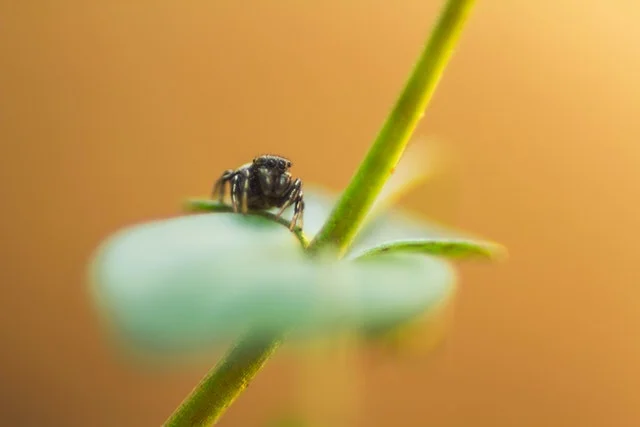
Pests are annoying critters that prevent your plant from growing and maintaining its health. It’s possible that you’re not even aware that these pests, such as mealybugs, spider mites, scales, aphids, and others, have taken all of the nutrients from your plant.
We must comb over all of the plant foliage and leaves to ensure that not a single egg remains when the treatment is complete.
Read more: Should I Cut Bent Spider Plant Leaves?
Problems that might arise include:
- On the surface of the leaves, there are visible white spots.
- Leaves and stems have been distorted.
- The leaves have holes in them.
- New leaves begin to fall off.
- Slow growth
- Speckled leaves
- Leaf blight
Solution:
- To spare another plant from infestation, immediately separate your afflicted spider plant.
- When cleaning the leaves, using a cotton ball that has been soaked in soapy water is an effective way to remove many of the bugs that are stuck to the leaves.
- You may create a solution by adding one liter of water to equal parts neem oil and dish soap. Spraying the plant with this solution will treat the issue for as long as it lasts.
- Spray your plant well with half a part alcohol and half a part neem oil. It gets rid of the pests like magic.
Prevention:
- Keep an eye on your plant every few days to keep pests at bay.
- It’s advisable to inspect your plants every few days to keep an eye on the insect population.
- As a preventative precaution, you should spray your plants with a mixture of neem oil and water every 10–15 days.
- It is important to avoid over-fertilizing and over-watering your plants.
Unsuitable temperature
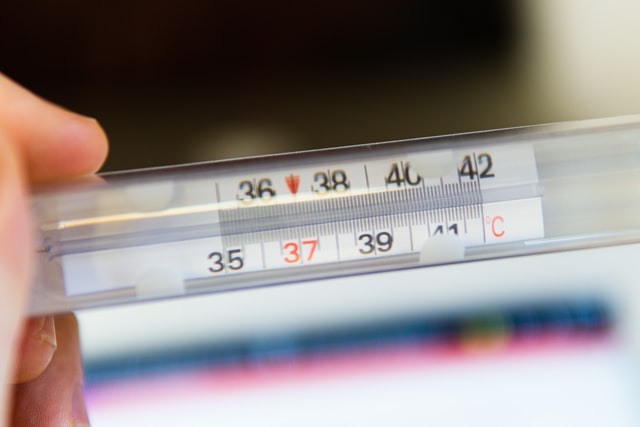
Temperature normally does not create too many problems for the plant, but if the temperature in your area swings a lot, this might be the cause of your worried spider plant.
We have no control over the temperature, but we can take steps to keep our plants safe. Let’s look into the several ways we might assist our plants.
Read more: The complete guide to repotting a spider plant
Problems that might arise include:
- The leaves shrink.
- Some leaves will begin to lose their color.
- Brown spots begin to develop.
- The new leaves begin to droop.
- The plant appears to be stressed.
Solution:
- Remove any damaged leaves.
- Keep an eye on the temperature surrounding your spider plant. Check that it is between 55 and 85 degrees Fahrenheit.
- Maintain the plant in an environment that has an appropriate lighting arrangement as required.
- During the winter months, you should relocate your spider plant to a warmer location.
Prevention:
- Maintain a temperature range of 55°F to 85°F for your spider plant.
- Do not allow your plant to be exposed to temperatures below 35°F.
- If the temperature is above 85°F, relocate your plant to a cooler location.
- It is highly recommended that you relocate your spider plant so that it is not near any radiators or vents.
Spider plant humidity problems
If the humidity level surrounding your plant is too high or too low, the plant may suffer. The leaves will mostly display symptoms of stress.
When it comes to spider plants, a low humidity environment might also be beneficial. However, if it is too high, it might be a problem for them. We must assess and handle the overall scenario to our plant’s benefit.
Read more: Why Is My Spider Plant Pale And Limp?
Problems that might arise include:
- Brown spots begin to develop.
- Some of the leaves are beginning to dry and crisp.
- There may also be some brown tips on the leaves.
Solution:
- Keep the humidity around your spider plant at a moderate level.
- Mist the area surrounding the spider plant to maintain optimal humidity levels.
- In addition, you may make use of a humidifier to maintain an appropriate level of moisture in the air surrounding your spider plant.
Prevention:
- Maintain a humidity level of at least 40% around your spider plant.
- Avoid exposing your plants to direct sunlight.
- water effectively.
- For a precise level, use a humidifier.
Conclusion
How Do You Bring A Spider Plant Back To Life?
Once you’ve given the plant enough water, enough light, and the proper quantity of fertilizer, you won’t have to worry about bringing your spider plant back to life.
- Over-caring for spider plants should be avoided. Love your plant, but not to the point of killing it.Your
- Your spider plant will remain healthy indefinitely if a proper balance of water, light, and fertilizer is maintained.
- Do not spray your spider plant on a frequent basis.
- Water from the soil rather than the foliage
- Maintain the appropriate temperature and humidity conditions around your spider plant at all times.
- Make sure you set aside some time every few days to tend to your plants.
Photo by Abel Y Costa on Unsplash
Photo by Brad Christian on Unsplash
Photo by Lucian Alexe on Unsplash
Photo by Susan Wilkinson on Unsplash
Photo by Matteo Fusco on Unsplash
Photo by Tima Miroshnichenko: https://www.pexels.com/photo/woman-in-white-shirt-and-blue-denim-jumper-preparing-soil-for-planting-6508570/
